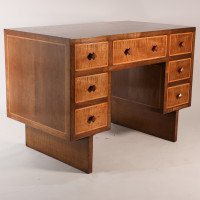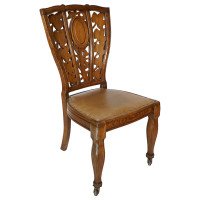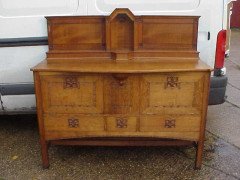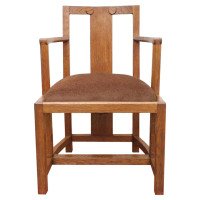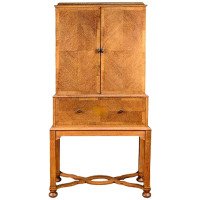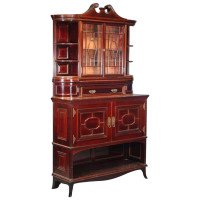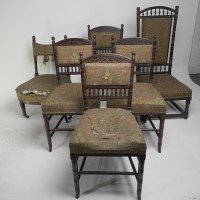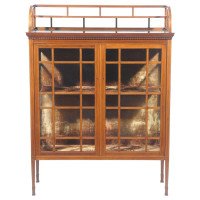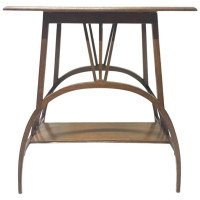Frank Brangwyn. A desk from the Pollard Co exhibition in the Autumn of 1930
POA
Frank Brangwyn desk from the Pollard Co exhibition in the Autumn of 1930 at their showrooms in Oxford Street. Brangwyn designed three rooms of furniture for the exhibition with Pollard and Co making the furniture. Charles Holme said: 'There is a large public who would like to possess convenient and beautiful things at reasonable cost. And here, through the enterprise and energy of Mr. Edward Pollard, are exhibited the results of what thought, design and workmanship can produce. (The Studio, vol. 100, 1930). The desk retains it’s original label and also has writings under the drawer bottoms with Brangwyn’s name, I have shown two of them and some period images showing the desk in the exhibition to the right. Born in Bruges and raised in London, Brangwyn grew up in a bubble of creativity. His father was a renowned Architect, winner of a silver medal in the Paris Exhibition. And his two siblings thrived in the field of Interior Design out in the US. Brangwyn is not the result of an extensive Arts education but in fact a young man whom in the early stages of his artist life was exposed to three immensely inspiring and engaging designers of the time- A H Mackmurdo, William Morris. And Siegfried Bing. Their discovery of Brangwyn back in 1882, lead to collaborative and group work at the Century Guild, where shortly after he was taken under the wing of Morris to practice in his workshops at Queen Square on Flemish tapestries. It didn’t go unnoticed that there were two fundamental themes that echoed throughout this experiential learning; the value of drawing from nature. And hence the value of a work ethic. A notable stepping stone in Brangwyn’s professional practice and platform to the public, was the mural he was commissioned to execute at the age of 28 in 1895 at Galeries L’Art Nouveau in Paris, owned by supporter and mentor Bing. From this. A confident designer flourished. His designs broadened and began materialising in a range of mediums, from textiles through to glass and jewellery, to furniture for floors and decorative pieces for walls. Only a year later, Brangwyn married Lucy Ray, whom was to be his partner managing Temple Lodge. A Georgian house in Hammersmith. And later The Jointure House in Ditchling where they settled. During his travels through English fishing villages and communities, up until 1913, he was able to mature his collection of drawing material by experiencing the world in pieces; France, Italy, Morocco and an array more. By the end of Brangwyn’s life, his extensive collection consisted of more than 20 mural commissions, 685 paintings, of which a further 265 are not dated, not forgetting etchings, lithographs. And wood engravings, exceeding 1,000. The desk was on display at the Scarborough Museums in the 2016. Trust's exhibition : 'Brangwyn 1867-1956: Man of the People'. Co-curated by Dr Libby Horner. H 32". x W 48". x D 28".

